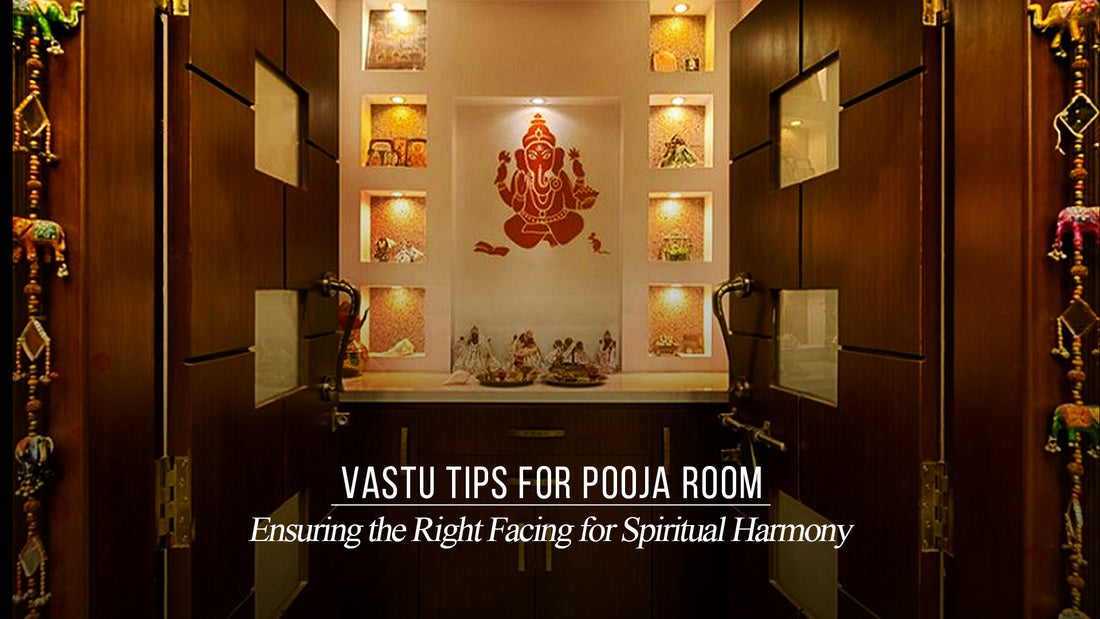The pooja room, also known as the mandir, is a sacred space within a home dedicated to prayer and spiritual connection. It is a place for inner peace, reflection, and connecting with the divine. Vastu Shastra, the ancient Indian science of architecture and design, offers valuable guidance for creating a harmonious and spiritually uplifting pooja room. By following these vastu tips for pooja room, you can ensure the right vastu for pooja room facing and optimize the flow of positive energy for a truly enriching experience.
The Significance of Pooja Room Placement and Vastu Shastra
The pooja room acts as a sanctuary within the home, a place to nurture your spiritual well-being. Vastu tips for home emphasize the importance of creating a space that fosters peace, serenity, and a connection with the divine. Vastu Shastra, meaning "science of dwellings," offers a set of principles to design living spaces that promote harmony and well-being. By applying these principles to your pooja room, you can create an environment conducive to spiritual practices.
Finding the Ideal Location for Your Pooja Room
The first step in creating a harmonious pooja room is selecting the right location. According to vastu for pooja room, the most auspicious zone for the pooja room is the northeast corner, also known as the "Ishan" corner. This direction is associated with Lord Shiva, representing positivity, peace, and spiritual growth.
Here is why the northeast corner is preferred:
- Positive Energy: The northeast corner is believed to be naturally charged with positive energy, making it ideal for spiritual practices.
- Balance: This corner represents the balance of the earth element (north) and the divine element (east), creating a harmonious environment for prayer.
- Peace and Prosperity: The northeast corner is linked to peace, prosperity, and spiritual growth, all of which are nurtured in a well-designed pooja room.
Alternative Options of Ideal Location for Your Pooja Room
If the northeast corner is unavailable, here are some acceptable alternatives based on vastu tips for pooja room:
- East Facing: The east direction signifies new beginnings and is associated with the rising sun. It is a good alternative due to its positive energy flow.
- North Facing: The north direction represents calmness and spiritual growth, making it a suitable option for the pooja room.
Areas to Avoid for Your Pooja Room
Vastu for pooja room principles advise against placing the pooja room in the following locations:
- South: The south direction is associated with the element of fire and is generally considered less favorable for a peaceful and serene pooja room.
- Southwest: This zone is linked with negativity and is best avoided for the pooja room.
- Below Staircases: The space beneath a staircase is considered inauspicious and can create a feeling of heaviness, making it unsuitable for prayer.
Positioning the Pooja Platform for Optimal Prayer
The altar, also known as the pooja platform, is the focal point of your pooja room. Its placement plays a crucial role in vastu for pooja room facing. Here is how to position it for optimal prayer:
- Alignment: According to vastu tips for pooja room, the ideal placement for the altar is on the east or north wall of the pooja room.
- Benefits of East/North Facing Altar: This alignment allows you to face east or north while performing your prayers. Facing east is considered particularly auspicious because it allows you to connect with the rising sun, symbolizing new beginnings and positive energy.
- Locations to Avoid: Vastu for pooja room principles advise against placing the altar on the west or south wall.
Considering the Idols/Deities and Their Placement
The brass idols or deities you choose to worship in your pooja room are a personal expression of your devotion. Here is how vastu for pooja room facing can guide their placement:
- Facing Direction: Ideally, the brass god idols should face either east or west. This aligns with the natural flow of cosmic energies and promotes a sense of calmness during prayer.
- Rationale for East/West Facing: Facing east allows the brass idols to receive the first rays of the morning sun, symbolizing a fresh start and divine blessings. Facing west is considered acceptable as long as the worshiper doesn't cast a shadow on the deities.
- Worshiper's Position: While performing pooja, it is recommended that you sit facing east. This aligns you with the flow of positive energy and promotes a sense of focus during your prayers.
Additional Tips for Creating a Serene Pooja Room Atmosphere
Vastu tips for the pooja room extend beyond just placement. Here are some additional practices to cultivate a peaceful and spiritually uplifting atmosphere:
- Cleanliness and Order: Maintain a clean and clutter-free pooja room. This reflects respect for the sacred space and promotes a sense of calmness during prayer. Regularly dust the brass idols, clean the floor, and organize your pooja essentials.
- Natural Light and Ventilation: Ensure proper ventilation in your pooja room. This allows for fresh air circulation and removes stale energy. Ideally, have windows that allow natural light to enter, further uplifting the space. If natural light is limited, opt for soft, diffused artificial lighting.
- Colors and Decor: Choose calming and serene colors for your pooja room walls. Light colors like white, cream, or light blue create a peaceful ambiance. Avoid dark or jarring colors that can be distracting. You can incorporate traditional Vastu motifs like lotus flowers or Om symbols on the walls or use artwork depicting scenes from Hindu mythology.
- Pooja Essentials: Keep your pooja essentials organized and neatly arranged. Invest in a puja thali (plate) made of brass or copper for placing offerings. Ensure you have incense sticks, diyas , and a container for holy water (gangajal) readily available.
- Deity-Specific Requirements: Research any specific placement needs for the deities you worship. Some deities may have preferred directions or positions within the pooja room.
Maintaining a Positive and Uplifting Pooja Room
- Regularly perform pooja in your pooja room, even if it is a simple offering or a short prayer. Consistency and devotion help maintain a positive energy flow in the space.
- When entering your pooja room, approach it with a sense of reverence and positive intentions. Let go of any negativity and focus on seeking peace and inner harmony.
- Establish a daily or weekly routine for prayer and meditation in your pooja room. This helps cultivate discipline and fosters a deeper connection with your spiritual practice.
A Harmonious and Uplifting Pooja Room
By following these vastu tips for pooja room, you can create a space that fosters peace, serenity, and spiritual growth. Remember, the most important aspect is to create a space that resonates with you and allows you to connect with the divine on a deeper level. With a little planning and dedication, your pooja room can become a sanctuary for spiritual reflection and renewal within your home.
Frequently Asked Questions
What are the rules for a pooja room?
There aren't strict rules for a pooja room, but vastu tips for pooja room offer valuable guidance for creating a harmonious and spiritually uplifting space. Here are some key considerations:
- Placement: Ideally, locate the pooja room in the northeast (Ishan) corner, east, or north. Avoid south, southwest, and below staircases.
- Altar Position: Place the altar on the east or north wall, allowing you to face east or north while praying.
- Idol Placement: Ideally, brass god idols should face east or west. This aligns with the natural flow of energy.
- Cleanliness and Order: Maintain a clean and clutter-free space.
- Natural Light and Ventilation: Ensure proper ventilation and natural light, if possible.
-
Colors and Decor: Opt for calming colors and traditional Vastu motifs for a serene ambiance.
What should we keep in a pooja room for good luck?
While specific items won't guarantee good luck, having these essentials in your pooja room can enhance your practice and create a positive atmosphere:
- Pooja Thali
- Incense Sticks and Diyas
- Container for Holy Water (Gangajal)
- Idols/Deities
-
Holy Books
How to keep Vastu Shastra in the pooja room?
Vastu tips for the pooja room go beyond just placement. Here are some ways to integrate Vastu principles:
- Maintain a clean and clutter-free space.
- Ensure proper ventilation and natural light.
- Choose calming colors and traditional Vastu motifs for walls or decor.
- Position the altar on the east or north wall, allowing you to face east or north while praying.
- Ideally, have the brass idols face east or west.
You may also like-
TOP 10 VASTU TIPS TO TRANSFORM YOUR HOME INTO A SANCTUARY
UNDERSTANDING THE BEAUTY AND MEANING OF BRASS SATHIYA AKHAND DIYAS

